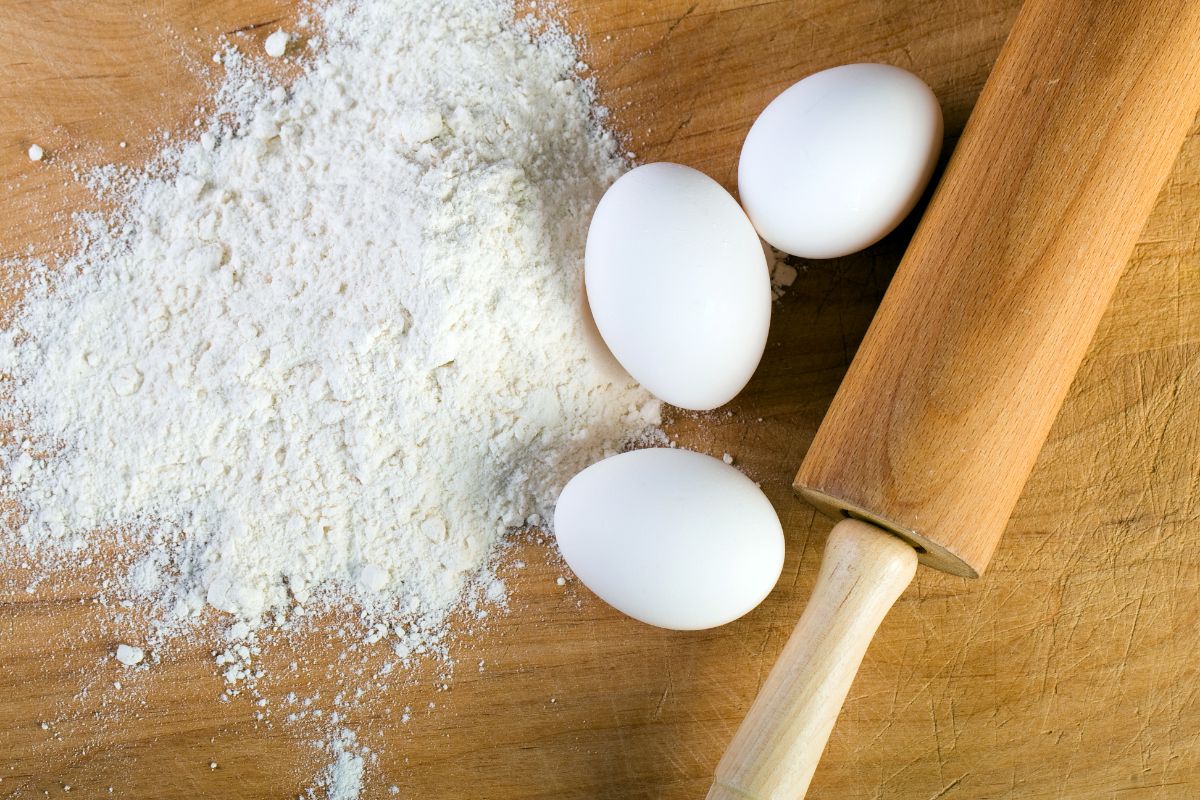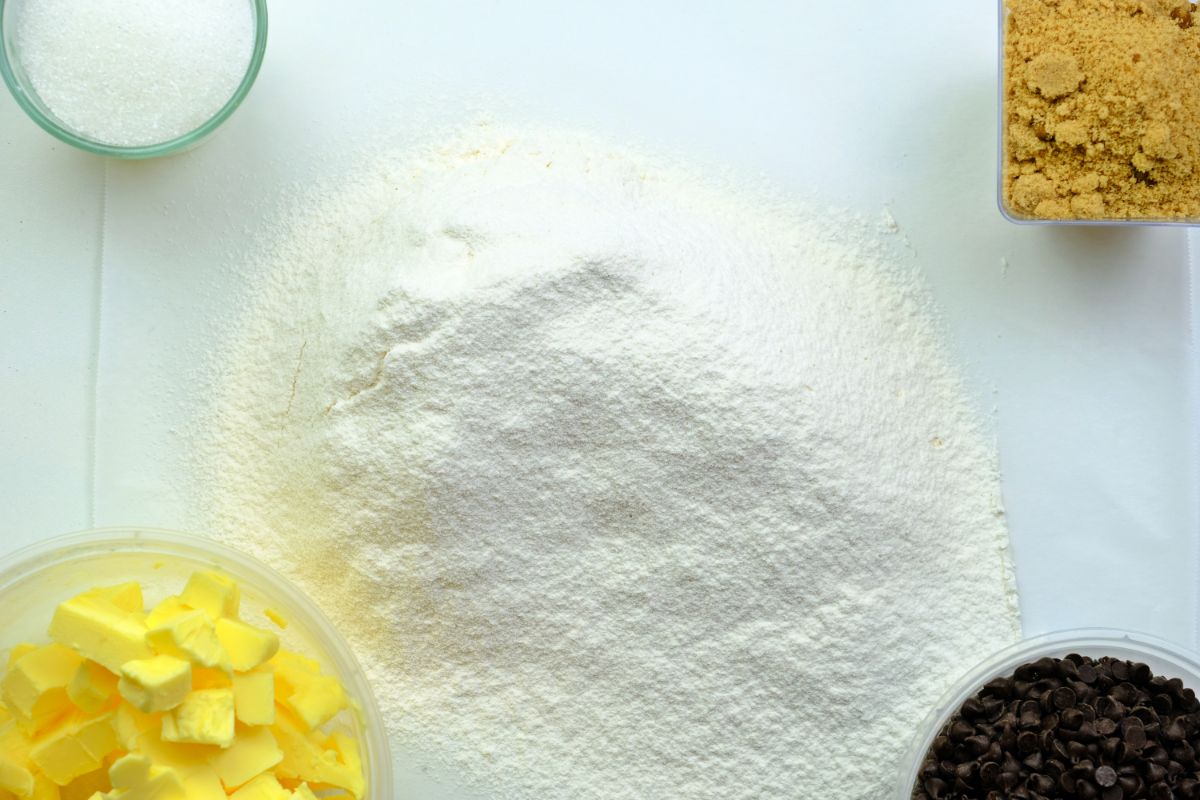Baking is more convenient with self-rising flour. This type of flour comes fully loaded with the three basic pantry ingredients; chemical leavening, salt, and baking powder. With self-rising flour, the time taken to bake is usually shorter as compared to the regular-yeast leavened bread baking.

But, can you use this type of flour in bread dough? Self-rising flours work best with a quick bread. Therefore, when baking chose recipes that do not require yeast as an ingredient. Some of the best recipes that work with self-rising include the Irish soft bread and any type of basic quick bread.
During the milling process, the soft winter wheat that forms self-rising flour undergoes intense grinding. A good proportion of the protein in the grain is lost during this process.
*This article may contain affiliate links. As an Amazon Associate, I earn from qualifying purchases. Please take that into account.
- Dutch oven
- Large mixing bowl
- Measuring cups and spoons
- Bread thermometer (fancy or a budget one)
- Scoring lame
Extra (nice to have):
- Kitchen scale
- Dough scraper and bowl scraper (yes, they are different)
- Cooling rack
- Baking stone (you don’t need a dutch oven if you use this)
👉Learn how to make bread and pizza with this awesome book.
What comes out is a low-protein self-rising flour that is ideal for treats such as pancakes, scones, and biscuits. When used in bread, your dough may not rise as much as in the yeast-leavened bread. Additionally, you may miss a chewy and hefty treat.
The main leavening agent in the self-rising flour is baking powder. Therefore, the dough will undergo a process of chemical leavening rather than the biological one in the regular bread.
However, you may be tempted to add yeast when doing your final mixing. This will not add any substantial benefit to the final treat.
In most cases, it interferes with the chemical reactions among the used ingredients. When using the flour, just remember to stay away from any unnecessary leavening agent to avoid an imbalance of flavor and smell of the resultant product.
For an excellent treat, keep the focus on the amounts in your recipe. Unlike regular or multipurpose flours, self-rising flours absorb less water.
This is because of the low-protein content. As a result, you may need to alter the liquids in your recipe to come up with a consistent dough that is easy to knead.
Secondly, the flour is salted already. All you need is to alter the salt content to achieve the desired treat. But, by how much should the liquid and salt content alteration be?
Since baking is an exact science, you will need to know the exact amount of salt that the flour contains. You cannot take chances here. Depending on the kind of treat you want to make out of the dough, the amount of salt and liquids used varies.
You are indeed after a fluffy bread with good taste, however, any other additional ingredients such as egg or butter affect the amount of salt that you will require.
Most flours from the stores contain a list of the ingredients and their proportions on the packaging. Sodium constitutes 16% of the flour in most cases.
However, this does not give an insight into the percentage of the salt content in the dough. For a basic self-rising bread, you may not need to add any extra amount of salt.
However, for advanced dough, it will be good to alternate the salt requirement by a slight margin. Personal tastes and preferences matter a lot when it comes to how small or large the margin should be. Remembers, perfection comes with time.
The quality of self-rising flour bread

Unlike in yeast-leavening, baking powder in self-rising flour doesn’t give the dough enough time to proof and rise. It will undergo a single and faster rise.
All you will see is a bubbling reaction between the ingredients and the dough. With self-rising flour, the resultant loaves usually end up with a cake-like consistency and sometimes lose the shape. As a novice baker, you can end up with undesired or unexpected loaves.
Besides, self-rising flours are made with low protein content types of wheat. Therefore, it has a weaker gluten network as compared to whole grain or multi-purpose flour dough.
Without proper kneading, you can end up with a bread that falls during the baking or cooling process. Or, a bread roll that is closer to what you wanted, but not it. T
Can you make self-rising flour?
Basic self-rising flour does not require experience or any background knowledge to make. You can easily make one by mixing ¼ teaspoonful of salt, 1 ½ teaspoonful of baking powder, and a cup of all-purpose flour. Thoroughly whisk the mixture to make it uniform before proceeding with the additional baking process.
Can you substitute multi-purpose flour for self-rising flour?
Multi-purpose flour is almost the same as the self-rising flour. The two have almost the same level of protein content. Their gluten networks are also almost the same in the basic dough.
Therefore, you can easily substitute one for the other. However, when substituting multi-purpose flour for self-rising one, have the level of salt and liquids in mind. Or else, you may end up with inconsistent, salty end product.
How to store a self-rising flour
The leavening agents in self-rising flours shorten its shelf life. It is therefore prudent to make or purchase only the required amount for instant use.
However, for a typical bread fiend, baking is a priority in life. You can find yourself baking often than you think. To cut the cash corners, you can buy a large quantity and store the excess for future use.
Self-rising flours should be used within 12 months from creation. In this period, the action of the leavening agent is at its peak. By enclosing the flour in an airtight container and keeping it in a cool, dark place, the floor can stay for one year period without any change.
Refrigerators and backside of the pantries are ideal places for keeping. Finally, do not expose the flour to water. Water is a potential risk factor for bacterial or mold growth.
Conclusion
Self-rising flour is closer to a pastry flour or multi-purpose flour. Though you can use it in bread dough, it does not deliver the exact qualities for a bread that stands out.
Replacing the yeast with baking powder and the gluten with almost nothing, there is much sweat to shed to come up with something that looks like bread.
Unless you are a baking geek, just save the flour for treats such as tender biscuits, muffins, and pancakes.
